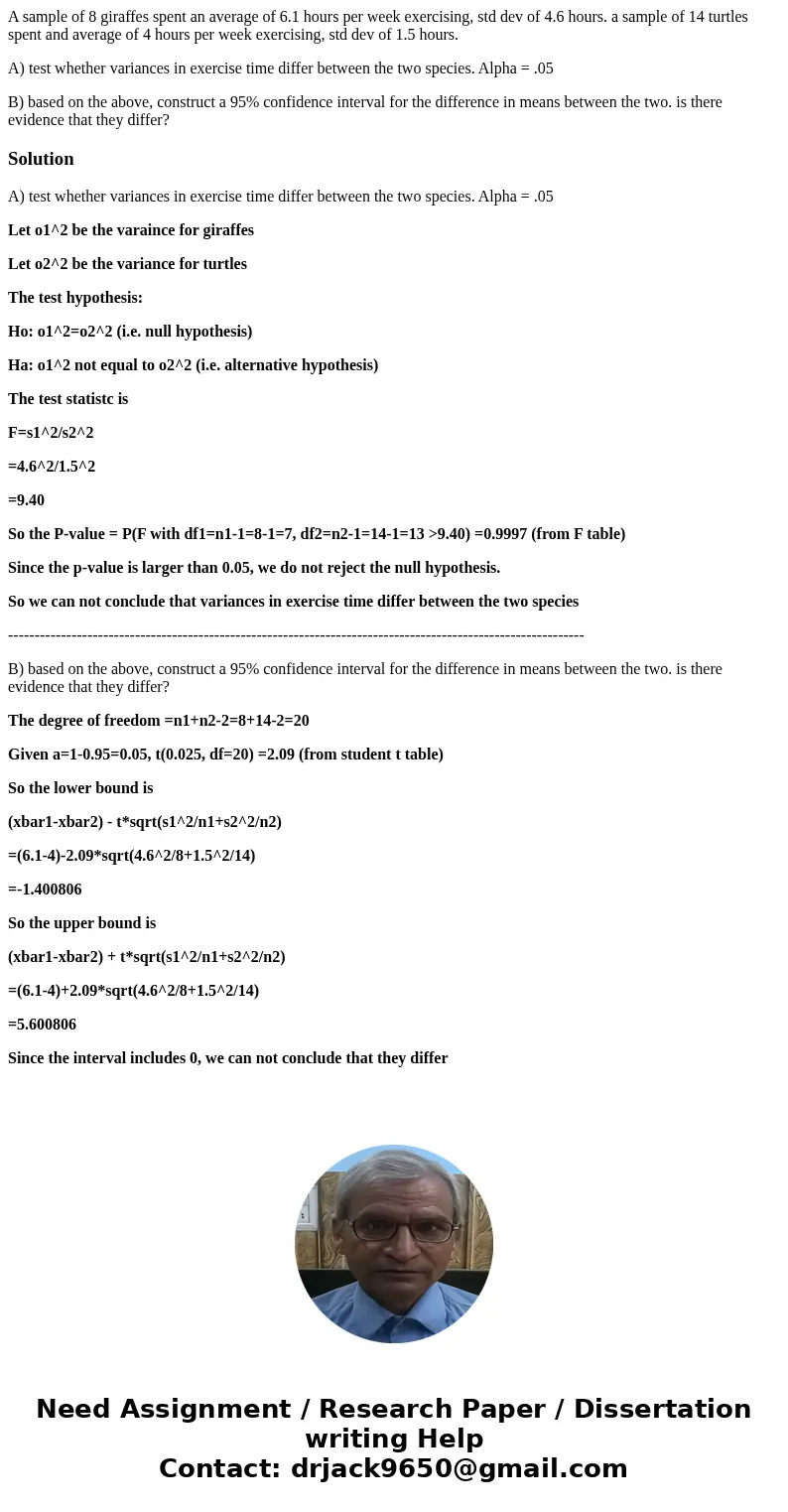A sample of 8 giraffes spent an average of 61 hours per week
A sample of 8 giraffes spent an average of 6.1 hours per week exercising, std dev of 4.6 hours. a sample of 14 turtles spent and average of 4 hours per week exercising, std dev of 1.5 hours.
A) test whether variances in exercise time differ between the two species. Alpha = .05
B) based on the above, construct a 95% confidence interval for the difference in means between the two. is there evidence that they differ?
Solution
A) test whether variances in exercise time differ between the two species. Alpha = .05
Let o1^2 be the varaince for giraffes
Let o2^2 be the variance for turtles
The test hypothesis:
Ho: o1^2=o2^2 (i.e. null hypothesis)
Ha: o1^2 not equal to o2^2 (i.e. alternative hypothesis)
The test statistc is
F=s1^2/s2^2
=4.6^2/1.5^2
=9.40
So the P-value = P(F with df1=n1-1=8-1=7, df2=n2-1=14-1=13 >9.40) =0.9997 (from F table)
Since the p-value is larger than 0.05, we do not reject the null hypothesis.
So we can not conclude that variances in exercise time differ between the two species
-------------------------------------------------------------------------------------------------------------
B) based on the above, construct a 95% confidence interval for the difference in means between the two. is there evidence that they differ?
The degree of freedom =n1+n2-2=8+14-2=20
Given a=1-0.95=0.05, t(0.025, df=20) =2.09 (from student t table)
So the lower bound is
(xbar1-xbar2) - t*sqrt(s1^2/n1+s2^2/n2)
=(6.1-4)-2.09*sqrt(4.6^2/8+1.5^2/14)
=-1.400806
So the upper bound is
(xbar1-xbar2) + t*sqrt(s1^2/n1+s2^2/n2)
=(6.1-4)+2.09*sqrt(4.6^2/8+1.5^2/14)
=5.600806
Since the interval includes 0, we can not conclude that they differ

 Homework Sourse
Homework Sourse